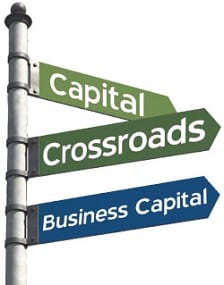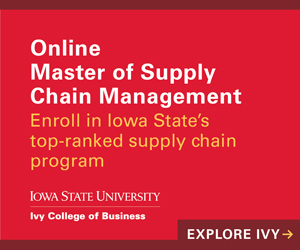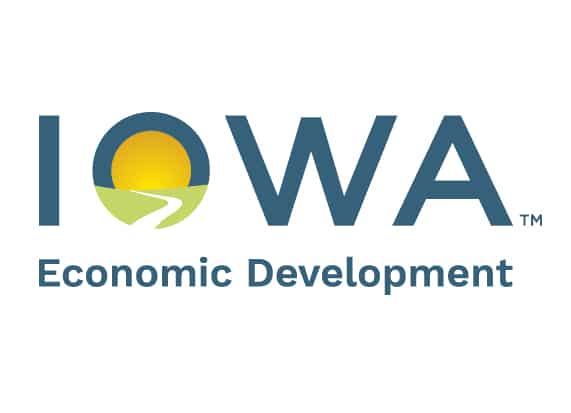Capital Crossroads: Business Capital
Business Capital looks to leverage natural regional strengths

What is Capital Crossroads:
Capital Crossroads is a regional planning effort headed up by leaders in Greater Des Moines and surrounding community,
What is Business Capital:
The Business Capital section of the Capital Crossroads plan focuses on how to best create jobs through growing what is already strong in the region and figuring out how to make it stronger.
Break it down however you want. The end goal of the Business Capital committee of the Capital Crossroad planning effort is simple.
“It’s all about job creation,” said Mark Miller, capital tri-chair and director of real estate management for Pioneer Hi-Bred International Inc.
The capital is split into three sections with the same overarching goal: to foster business development in the area.
Miller’s focus is focused on retaining existing businesses. Tri-chair Sharron Quisenberry, vice president of research and economic development at Iowa State University, is heading up the section focused on growing start-ups and small businesses. Kathryn Kunert, the third tri-chair and vice president of community relations and economic development at MidAmerican Energy Co., is heading up the section on marketing the region.
An underlying element of the capital as a whole is the recognition of six target cluster industries, as identified in earlier planning stages of the Capital Crossroads plan. Separate committees of local leaders and experts have been formed for each of the cluster groups, and those panels are set to meet about twice a year.
“At the end of the day, these are target groups that we’ve identified that the Greater Des Moines area is strong in,” Miller said. “What we want to do is find out from them firsthand how can we make it better for you to do business in Central Iowa? So we’re asking questions about work force; we’re asking questions about rules and regulations; we’re asking questions about capital investment.”
The concept of target clusters also infiltrates into the marketing part of the plan. The general conclusion of a report released by Market Street Services Inc. in the lead-up to the final plan is that marketing efforts done by the Greater Des Moines Partnership are “very strong.” The trick now is to incorporate the target clusters more into the marketing efforts, both in the area and outside the area.
The section Quisenberry is leading is charged with building on the momentum that is already happening in the region’s start-up community. With existing organizations such as the Technology Association of Iowa, StartupCity Des Moines, the Business Innovation Zone and a potential proof-of-concept center at Iowa State University, the challenge is to coordinate efforts.
“It’s the ability to synergize and to really put resource packages together that are ultimately going to make a difference,” Quisenberry said. “Where the failure comes in is where you have disparity, where you have everyone doing their own thing. I think what we’re attempting to do with Crossroads is (figure out) how can we begin to work across public-private partnerships so we can synergize our resource base.”
In keeping with an overall Capital Crossroads theme, the Business Capital section incorporates the region beyond Greater Des Moines into the mix.
Iowa State figures to play a large part, with the ISU Research Park and potential proof-of-concept center for start-ups trying to test new technology. When marketing the region, Kunert said, it’s important to think about how to incorporate the entire area identified as part of the Crossroads initiative. That stretches beyond the Des Moines Metropolitian Statistical Area to include Ames, Boone, Marshalltown, Newton and Pella.
The breakdown
The Business Capital section of the Capital Crossroads final plan document lays out three subsections. Here is a look at the subsections and what the capital tri-chairs deem to be most important heading into the implementation process.
Grow what’s here
• A large emphasis is putting together target business councils for the region’s target clusters. The target business clusters identified for Central Iowa are finance and insurance, information solutions, health and wellness, agribusiness, advanced manufacturing and logistics. Each cluster will have a committee charged with meeting a few times each year to give input on what the region can do as a whole to strengthen the given industry. “I see our role as, how can we make Central Iowa a better place to do business?” Miller said.
• The Capital Crossroads Strategic Plan document speaks to optimizing existing business retention and expansion programs. Miller noted that the Greater Des Moines Partnership is already doing things to find out how to best retain existing businesses, but a more coordinated effort is needed with local chambers of commerce and the Partnership. Feedback expressed in the plan is that too often business retention and expansion programs are reactive instead of proactive.
• The plan says that Central Iowa’s business climate is competitive, but a few things could be better, including continued efforts to lower commercial property taxes and making sure that there is consistent regulatory oversight from state agencies.
Start up and sustain
• The Capital Crossroads plan speaks to developing a proof-of-concept fund to help start-up businesses obtain seed funding to test their ideas at the earliest stages. Iowa State University is getting into the mix by developing a proof-of-concept center for start-ups. “A lot of times where technology falls through is start-ups get into the process and then realize there’s really no marketability or commercialization potential,” Quisenberry said. “If you don’t have a way of proving that, then you’ve wasted a lot of time and effort.”
• The plan recognizes the need for a “conveyor belt” to support technology start-up development and expansion. The conveyor belt would guide entrepreneurs through all phases of growing their businesses, including proof-of-concept assessment, seed funding, prototype product development, exit-strategy planning and guidance from experienced entrepreneurs. The Business Innovation Zone and StartupCity Des Moines are named as possible organizations to help develop the conveyor-belt.
• The plan mentions the Ewing Marion Kauffman Foundation’s SourceLink program as a way to connect entrepreneurs to existing resources, such as the Mid Iowa Small Business Development Center and the ISU Small Business Development Center. The model has been utilized in Kansas City and St. Louis.
Market and attract
• A general idea in the capital, as reiterated by Kunert, is that the region’s marketing efforts have been strong, and could be stronger with slight adjustments. One focus figures to be better marketing of specific target industries. Specific marketing enhancements include strengthening the Greater Des Moines Partnership’s website, boosting the region’s social media presence and focusing marketing mission trips on places with high concentrations of target industries.
• The plan identifies the Partnership’s existing international marketing efforts, but also notes that the Partnership needs to determine whether there are other opportunities to better leverage overseas markets for regional gain.
• The plan mentions a potential push to more effectively manage inter-regional competition. Part of that could include discussing some sort of revenue-sharing agreement between area governments to gain collective benefits from corporate expansion or relocation in the region. “We’re too small to stand alone, and anybody who thinks they need their own marketing initiatives I think has really got to focus on the region, and what the value is,” Kunert said.







